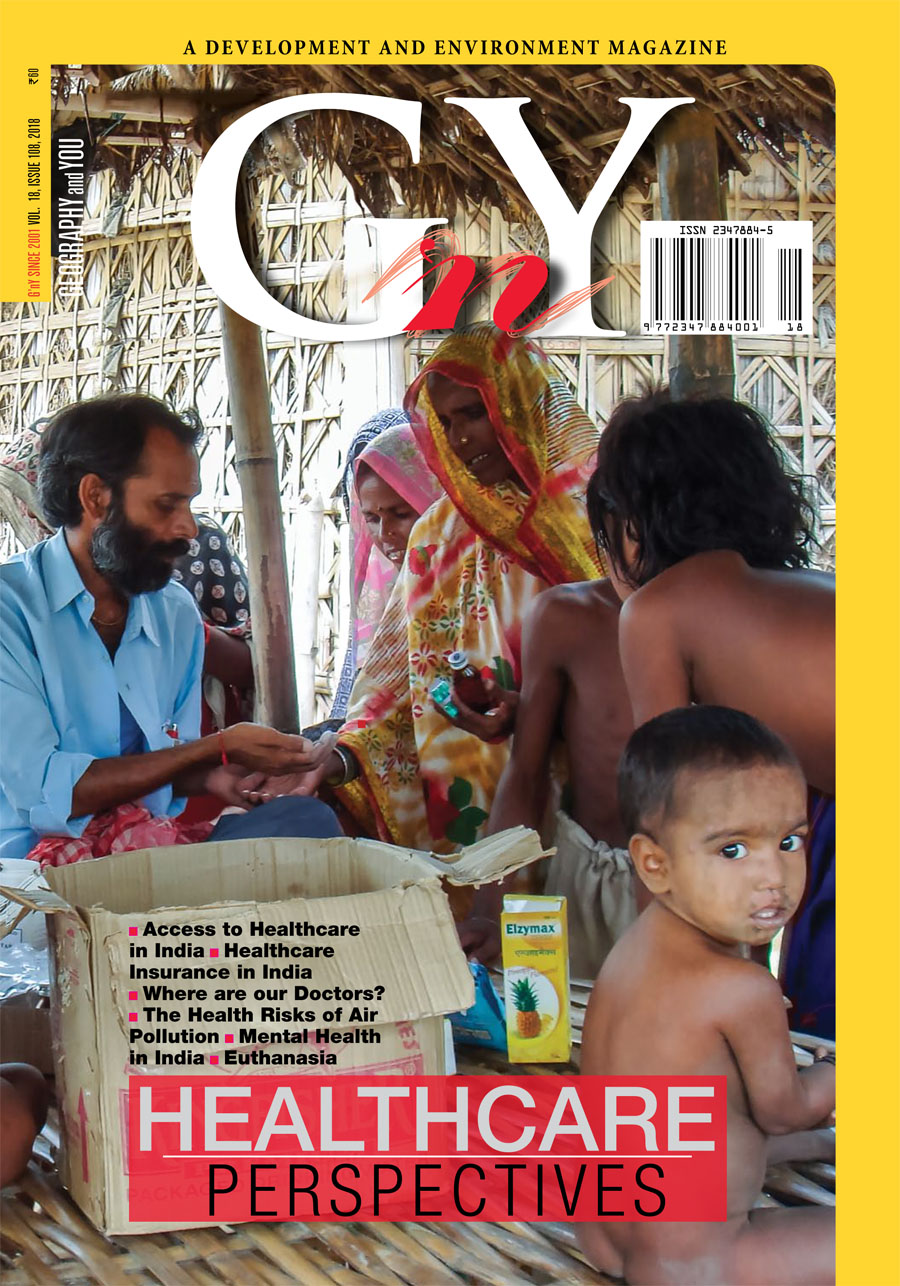
Inside this issue
Healthcare Perspectives
Accessible and affordable healthcare in the public sector can reduce India’s growing dependence on private institutions. However, at present lopsided and poorly manned governmental facilities leave no alternatives apart from accessing private institutions and incurring a high ‘out-of-pocket’ expenditure in health care.
The Union Government’s budget speech of 2018-19 announced two major initiatives, the National Health Protection Scheme and the establishment of Health and Wellness Centres. Central and state governments have always put health at the forefront of planning, but public health expenditure as a percentage of GDP has remained low. Low expenditure, skewed distribution of coverage across states, lack of facilities in government hospitals among other problems prevail in the public health sector.
Opinion
The Indian Health sector currently suffers from a skewed doctor to patient ratio. India must look beyond recruitment, focus on retention of public sector doctors and use methods of social science and management for enhanced delivery of public health services.
Emerging Concerns
Rising levels of air pollution are posing a health hazard to people worldwide. In 2016, exposure to ambient PM2.5 caused 1.025 million deaths in India. While a number of policies to combat air pollution exists, improper implementation leaves us gasping for the most basic of human needs—air.
In March 2018, the Supreme Court of India in a landmark judgement passed an order legitimising passive euthanasia in India. However, if passive euthanasia through a ‘living will’ is legalised, the courts must engage medical practitioners to also look at providing terminal patients a painless way of passing on.
Mental health issues remain unreported over most of India. According to the 2017 World Health Organisation (WHO) Report, major or minor mental illnesses requiring expert intervention is 7.5 per cent of India’s population. Also, estimates show that of roughly 60 million people with mental illnesses, about 90 per cent are currently not receiving treatment in India.
In brief
The human race fights innumerable diseases. Scientific innovations and new findings help the human race to keep ahead in the war against ill-health. We bring to you few project summaries that is an imperative read for all.
We are now fortnightly. A big thank you to all our readers. We are indebted to you for your support. This first issue of the fortnightly series, 108th in the G’nY timeline, is about one of the largest development challenges India faces—healthcare. It is common knowledge that doctors in

